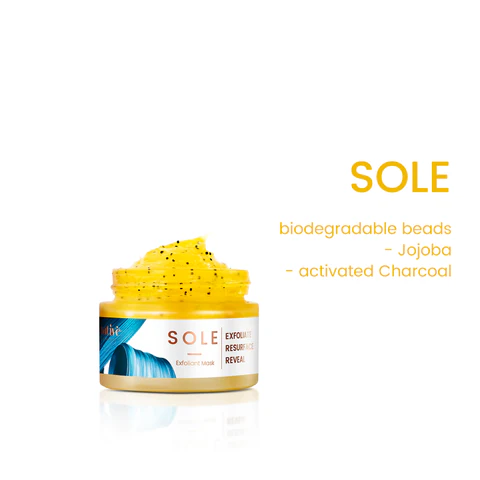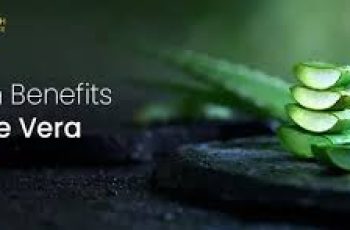Can some cosmetic ingredients pollute our oceans and cause coral reef bleaching?
The short answer is sadly yes.
Besides the huge problem of excessive plastic packaging ending up in our waterways and oceans, we have had in the past years a few clear signs that the issue is way deeper than packaging, and this is due in small part to the beauty and personal care industry.
Let us take a closer look at some skincare ingredients potentially polluting our oceans and what less harmful alternatives are currently available.
UVA / UVB Filters
Sunscreens are chemicals or minerals that absorb or reflect ultraviolet sunlight radiation; they are widely used in many skincare products to protect the skin from UVA and UVB rays. Sunscreens are classified in:
Organic filters (= chemical) They absorb radiation and then dissipate the absorbed energy.
Inorganic filters (= mineral) They reflect UV radiation.
The issue
Both organic and some inorganic filters can reach the marine environment directly (wash-off from the skin when swimming) and the coral reef.
Organic UV filters have been found in several aquatic organisms from marine invertebrates to mammals and even dolphins! Over time, they accumulate in the muscle tissue and fat deposits of these animals and therefore are likely to enter marine food chain.
Nano-Zinc Oxide, an inorganic mineral filter, is toxic for marine life such as algae, sea urchins and other marine organism.
Some UV filters can cause coral bleaching at extremely low concentrations. It is well known that coral mortality main cause is linked to increased water temperature; however, organic UV filters accelerate both coral disease and mortality because they produce significant amounts of Hydrogen peroxide and even phytoplankton (a key element of the marine food chain) can be affected. In 2020, on average, 15% of coral cover remains bleached white. *
The solution
Avoid sunscreens formulated with:
❌ oxybenzone
❌ avobenzone
❌ octocrylene
❌ enzacamene
❌ homosalate
❌ nano zinc oxide
Prefer sunscreens formulated with:
👉🏻 non-nano zinc oxide
👉🏻 non-nano titanium dioxide
Plastic microbeads
Plastic Microbeads are used in personal care products such as:
Body Scrubs
Face Exfoliants
Bubble Bath / Shower gel
Soaps
Glitter
The issue
Plastic Microbeads are too small to be trapped in the sewage treatment plants. They enter the waterways via domestic drainage systems and then get transported to the oceans.
Depending on the type of plastic and density, microbeads either accumulate on the seabed or float on the sea surface. Full plastic degradation can take hundreds of years (take PET, which degrades in 450 years) so invisible plastic microparticles can be ingested by aquatic organisms.
The solution
Buy cosmetics made with natural and biodegradable microbeads alternatives such as:
biodegradable hydrogenated oils waxes like jojoba beads
grounded kernels or shells (coconut, apricot, walnut…)
diatomaceous earth
charcoal
Triclosan (TCS)
In the past years, the use of hand sanitizers and antibacterial hand soaps (especially from the onset of Corona Virus in early 2020) has increased dramatically.
One inexpensive antibacterial ingredient and preservative largely used in personal care products, Triclosan (TCS), is also on the watch list of marine pollutants. It is used for:
antibacterial hand soaps
anti-acne products
sanitizing hand gels
antibacterial wipes
cleaning and sanitizing products
The issue
TCS is discharged via domestic sewage; during the wastewater treatment process, it can also be converted into chlorinated derivatives, even more toxic compounds.
In high concentration, TCS accumulates in algae, marine mussels, and marine mammals and it is considered toxic.
The solution
Some essential oils have good antibacterial properties (Skin application: Tea Tree, Lemon Tea Tree, Lemongrass, Peppermint, Manuka, Kanuka, Fragonia, Orange, Palmarosa. Inhalation: Thyme, Clove, Eucalyptus, Oregano, Cinnamon) **
Silver Citrate and Citric Acid
Alcohol (isopropyl alcohol)
At Native Essentials being sustainable and eco-friendly is important: from the sourcing of each ingredients to the formulations and packaging. We will never use any natural ingredient that is not from a sustainable source, that is not thoroughly tested, and that is not 100% safe for the environment, including our oceans.
SOLE is an exfoliant made with fully biodegradable (hydrogenated) Jojoba beads and activated charcoal beads.
KORU is a gentle antibacterial dry face oil formulated with essential oils (Lemon Tea Tree, Manuka, Kanuka, Lemon Myrtle, Fragonia)
DQH Can I use salicylic acid first and then vitamin C?
It’s easy to create a skincare routine, but knowing how to use it is another thing entirely. In most cases, if you’re not getting the desired skin results, it could be due to the layering of conflicting ingredients. So, is it possible that salicylic acid and vitamin C are such ingredients? Or are these active ingredients the duo that’s been missing from your skincare routine? If you want answers, stick around because today we are going to explain the benefits of salicylic acid and vitamin C and how they can be used in your daily life.
What are the benefits of salicylic acid for skin?
Salicylic acid is one of the most commonly used beta hydroxy acids and is favored by many people with oily, acne-prone skin. This acid is derived from willow bark, and unlike its water-soluble relatives (called alpha-hydroxy acids), salicylic acid is oil-soluble, which means it can penetrate deeper into the lower layers of the skin. Once it reaches the lower layers, it can help unclog pores of excess sebum, dirt, bacteria, debris, and impurities. This results in clearer skin tones and greater definition.
Not only does salicylic acid benefit the underlying layers, but the outer surface of the skin benefits as well. When applied to the skin, salicylic acid removes the buildup of dead skin cells. This is accomplished by breaking the bonds that hold dead cells to the surface. Over time, this can cause the complexion to look dull and prone to acne, blackheads, and other blemishes.
If you’d like to learn more about salicylic acid and how it can improve your skin, check out this dedicated blog post from a beauty insider.
What are the benefits of vitamin C for skin?
Vitamin C is considered one of the most powerful antioxidants, which means it is very effective at fighting free radicals and preventing them from causing further skin damage. Examples of free radicals include pollution, central heating, UV rays and harsh climate. They attack proteins, fats and cell membranes as soon as they come into contact with the skin, causing signs of premature aging such as fine lines and wrinkles as well as hyperpigmentation, flaky patches of skin and loss of elasticity.
Many people usually prefer to use vitamin C in their morning routine as this ingredient gives the complexion a radiant glow. You’ll also find that vitamin C can target areas of hyperpigmentation, plumping the skin and reducing the appearance of fine lines and wrinkles.
The thing about vitamin C is that there are a lot of outdated studies going back to the 1950s that describe vitamin C as an unstable skin component. Thanks to improvements in modern technology, this is no longer the case as all products now contain a stable form of vitamin C.
Visit The Beauty Insider to learn more about vitamin C. So please check out our blog post.
Can I use salicylic acid first and then vitamin C?
Yes, you absolutely can. In fact, it’s thought that using salicylic acid before using vitamin C ensures it penetrates faster and works faster.
This is an efficient way to utilize two power sources, and the reason has to do with pH. For example, the skin’s natural pH is about 4.7, making it slightly acidic. Salicylic acid and vitamin C are also both acidic, and you’ll find that vitamin C is absorbed quickly into the skin. Therefore, using salicylic acid beforehand can increase the acidity of the skin and allow vitamin C to penetrate into the skin faster.
While this is considered an effective way to combine two powerful ingredients, you need to be aware of your skin type and how it reacts to certain active ingredients. Even people with perfect, normal skin can experience skin sensitivity and irritation. Therefore, always consult a doctor or dermatologist before using any new products on your skin.
It’s also important to follow skin application rules. In this case, you need to use the product correctly to ensure you get the best results for your skin. If you’re not sure what I mean, the basic rule for skin is to start with the thinnest consistency and work your way up to the thickest consistency. This prevents a barrier from forming on the surface, preventing other active ingredients from penetrating the skin.
Can I use salicylic acid at night and vitamin C in the morning?
Yes, absolutely, this is considered the most effective way to get returns without any adverse side effects. This is because there is enough time between applications to ensure that the skin’s pH levels return to balance.
You’ll also find that Vitamin C is rich in antioxidants and is perfect for use in the morning to ensure your skin is protected and looking its healthiest. Due to the small size of salicylic acid molecules, it is an acid that is able to reach the deepest parts of the skin. While this is effective at keeping skin clear, it also increases the risk of irritation and photosensitivity. Therefore, many people prefer to use powerful BHAs in their evening routine without exposure to UV rays, pollution, or harsh weather.
Warning: If you avoid using sunscreen every day, none of these ingredients will do what your skin needs. The combination of chemical peels and powerful ingredients increases the risk of further damage to the skin’s surface. Use SPF 50 every day to keep your skin protected and your lipid barrier healthy, even on cloudy days, keeping your skin in top condition.



